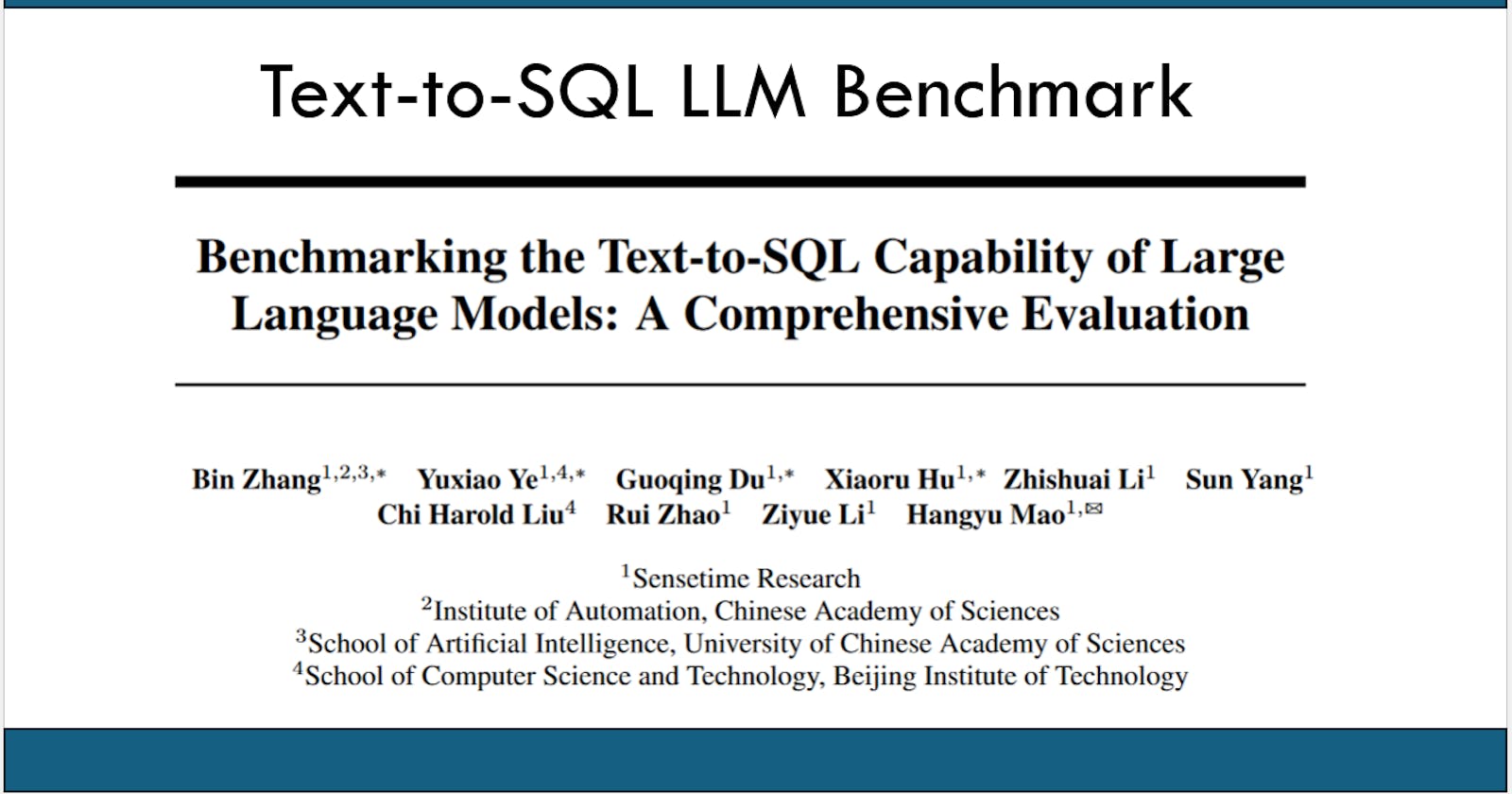Benchmarking the Text-to-SQL Capability of Large Language Models: A Comprehensive Evaluation (Short Summary)
Text-to-SQL LLM Benchmark
Text-to-SQL involves converting natural language questions into SQL queries to interact with databases is a complex task. Large Language Models (LLMs) have shown great promise in text-to-SQL.
There's no systematic way to evaluate LLMs for this task. This leads to issues like dataset overfitting and a lack of understanding about how to best use LLMs for specific sub-tasks involved in generating accurate SQL.
Requirement of a Comprehensive Benchmark
A comprehensive benchmark is needed to understand LLM capabilities for text-to-SQL and create better LLM-based solutions. This benchmark should go beyond the typical end-to-end accuracy measurement.
The Proposed Solution
The authors propose a detailed benchmark focusing on:
Dataset Design: A dataset is needed that avoids overfitting by carefully considering question complexity, database size, and the types of knowledge required to answer questions.
Five Core Tasks: The benchmark should evaluate models on these key sub-tasks involved in text-to-SQL:
Text-to-SQL (core task)
SQL Debugging (fixing errors)
SQL Optimization (making SQL more efficient)
Schema Linking (understanding database structure)
SQL-to-Text (explaining what an SQL query does)
Prompt Engineering: Experiment with different prompt formats (the instructions given to the LLM) to find what works best.
Model Variety Test different types and sizes of LLMs (general-purpose vs. code-specific) to see how they perform.
Information Granularity: Test how the amount of context provided to the LLM impacts its accuracy with different learning strategies (zero-shot, few-shot).
Key Takeaways:
Traditional machine learning methods for text-to-SQL have been outpaced by LLMs.
A major focus of the proposed solution is avoiding overfitting models to specific datasets.
Understanding the strengths and weaknesses of LLMs on the various sub-tasks will help design better text-to-SQL systems.
--> For complete details, refer to the paper.

